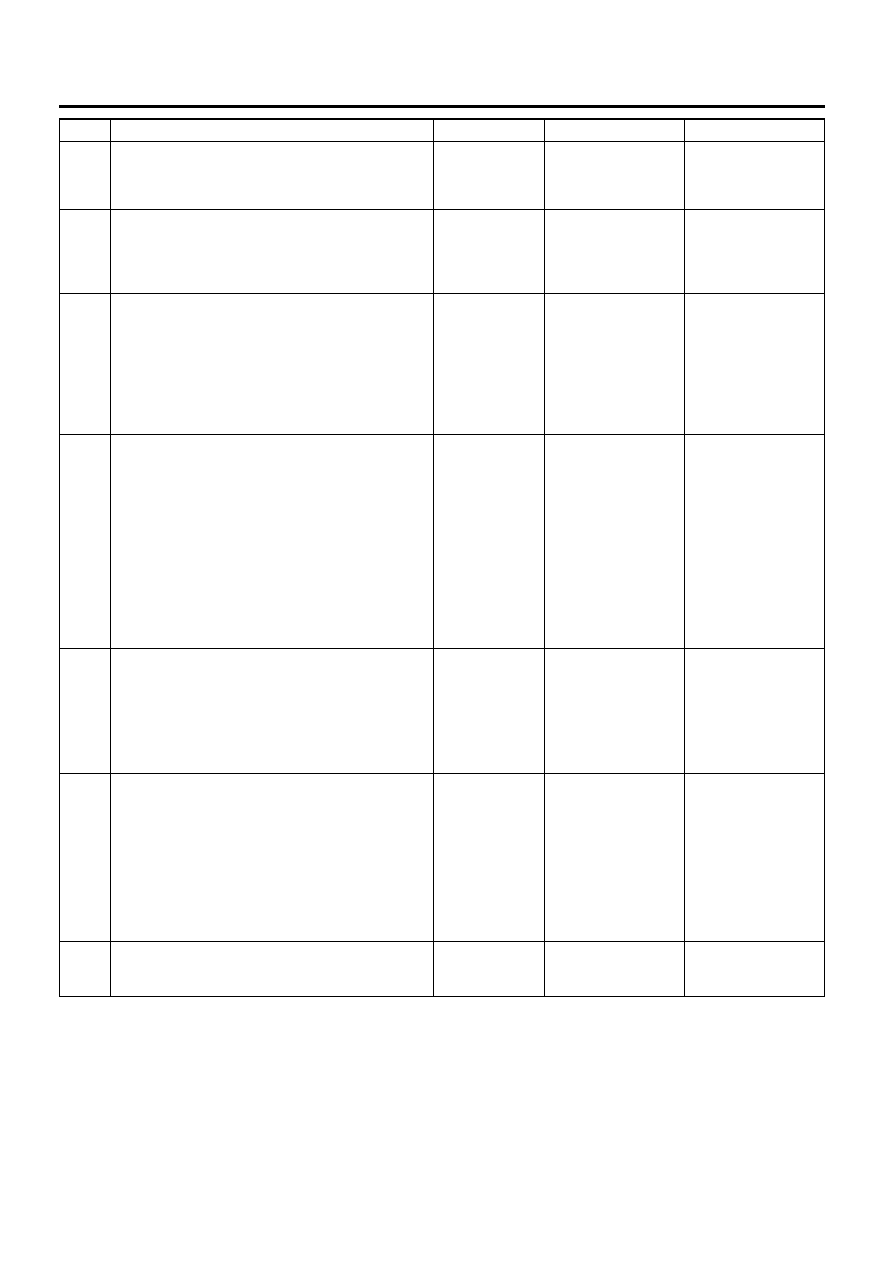Isuzu N-Series. Manual - part 697

6E-210 Engine Control System (4HK1)
12
Replace the fuel filter cartridge. Refer to Fuel Filter
Cartridge Replacement in the Fuel System Section.
Did you complete the replacement?
—
Go to Step 17
—
13
Replace the FRP sensor. Refer to Fuel Rail
Pressure (FRP) Sensor Replacement in this
section.
Did you complete the replacement?
—
Go to Step 17
—
14
Important:
Replacement injector must be programmed.
Replace the appropriate fuel injector that does not
change engine speed when commanded OFF.
Refer to Fuel Injector Replacement / Fuel Injector
ID Code Data Programming in this section.
Did you complete the replacement?
—
Go to Step 17
—
15
Important:
The fuel supply pump must be timed to the engine
and adjustment value must be learned to the ECM.
Notice:
Always replace the fuel filter cartridge when a fuel
supply pump is replaced.
Replace the fuel supply pump and fuel filter
cartridge. Refer to Fuel Supply Pump Replacement
in this section and Fuel Filter Cartridge
Replacement in Fuel System section.
Did you complete the replacement?
—
Go to Step 17
—
16
Notice:
There is a possibility that the pressure limiter valve
stuck open or opening pressure has fallen.
Replace the pressure limiter valve. Refer to Fuel
Rail Replacement in this section.
Did you complete the replacement?
—
Go to Step 17
—
17
1.
Reconnect all previously disconnected
harness connector(s).
2.
Clear the DTCs with the Tech 2.
3.
Turn OFF the ignition for 30 seconds.
4.
Start the engine.
5.
Operate the vehicle within the Conditions for
Running the DTC.
Did the DTC fail this ignition?
—
Go to Step 2
Go to Step 18
18
Observe the DTC Information with the Tech 2.
Are there any DTCs that you have not diagnosed?
—
Go to Diagnostic
Trouble Code (DTC)
List
System OK
Step
Action
Value(s)
Yes
No